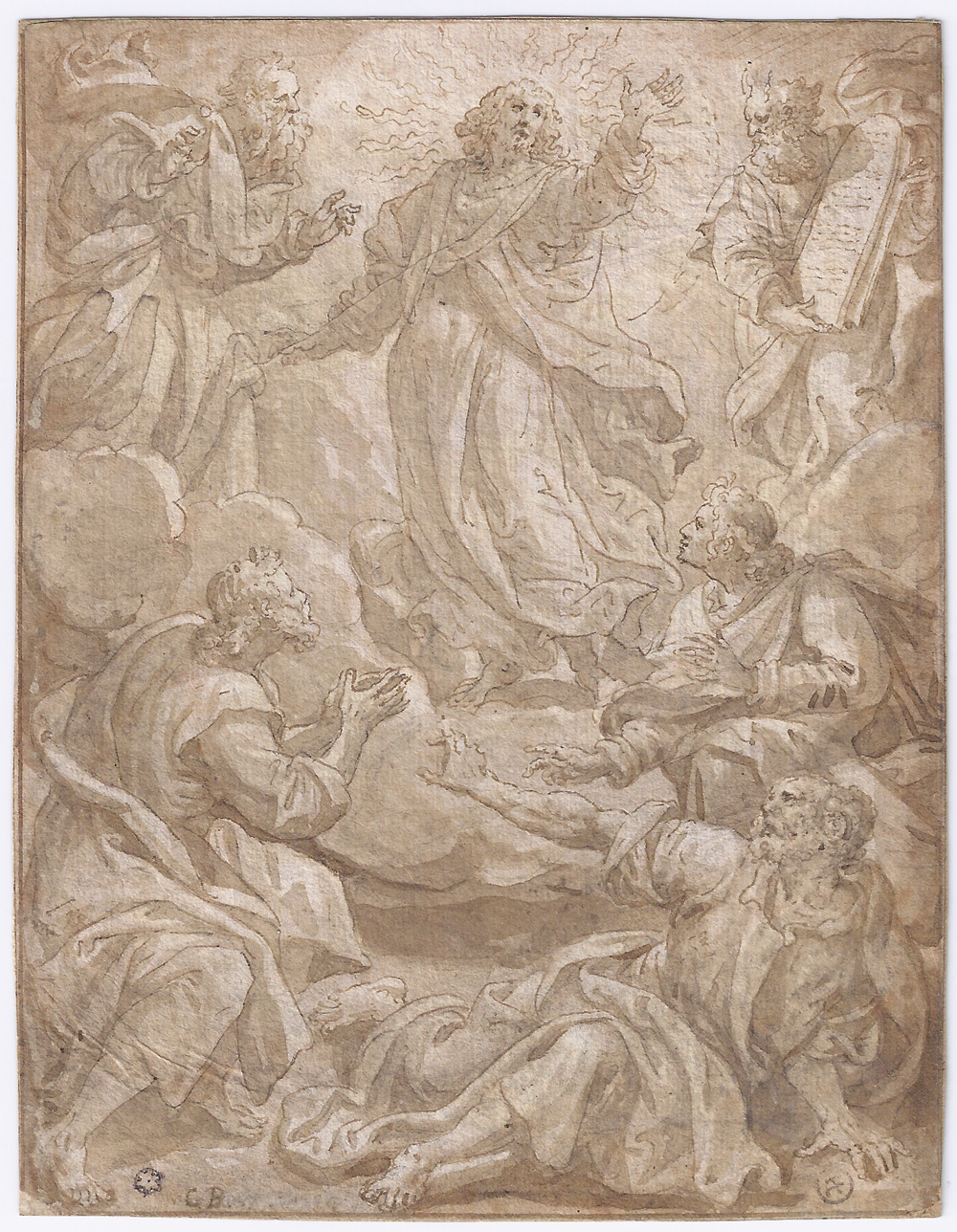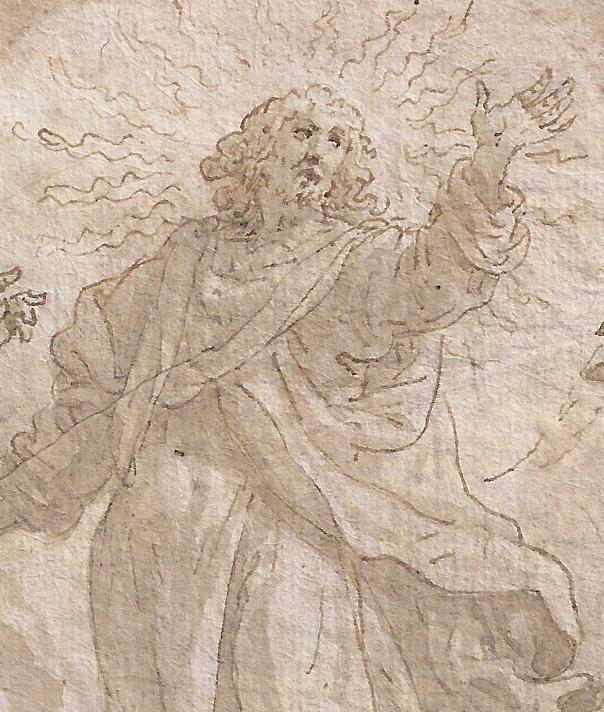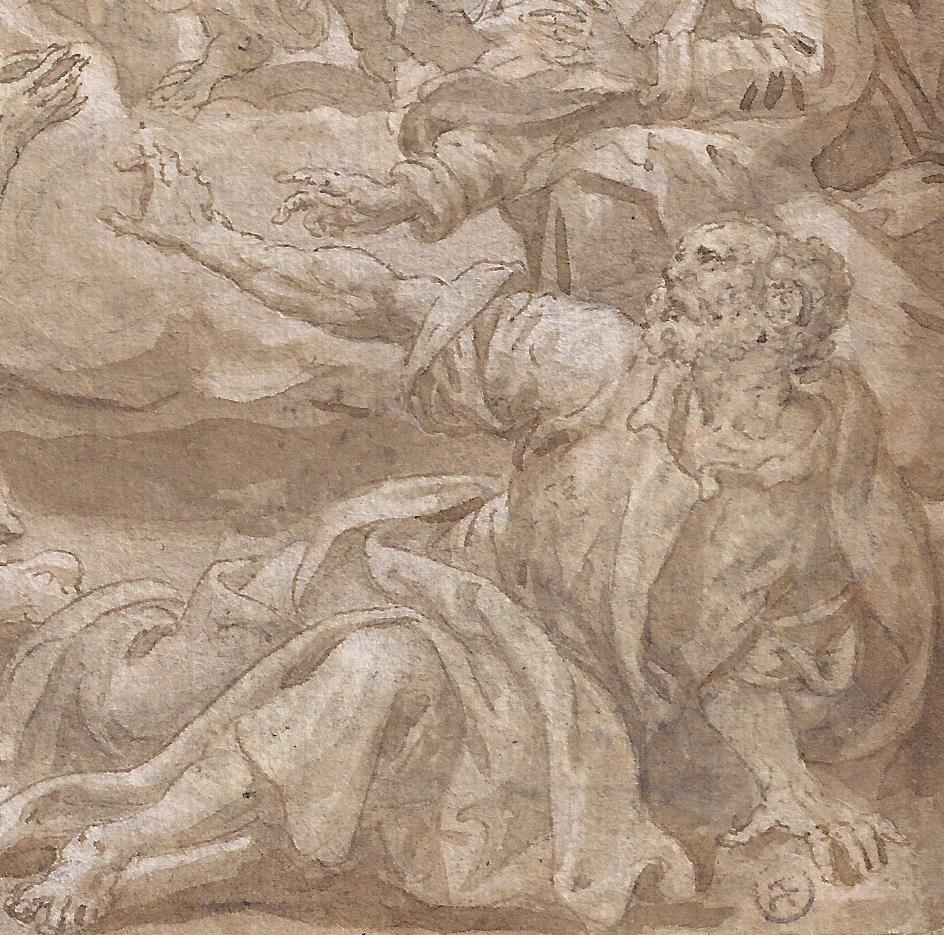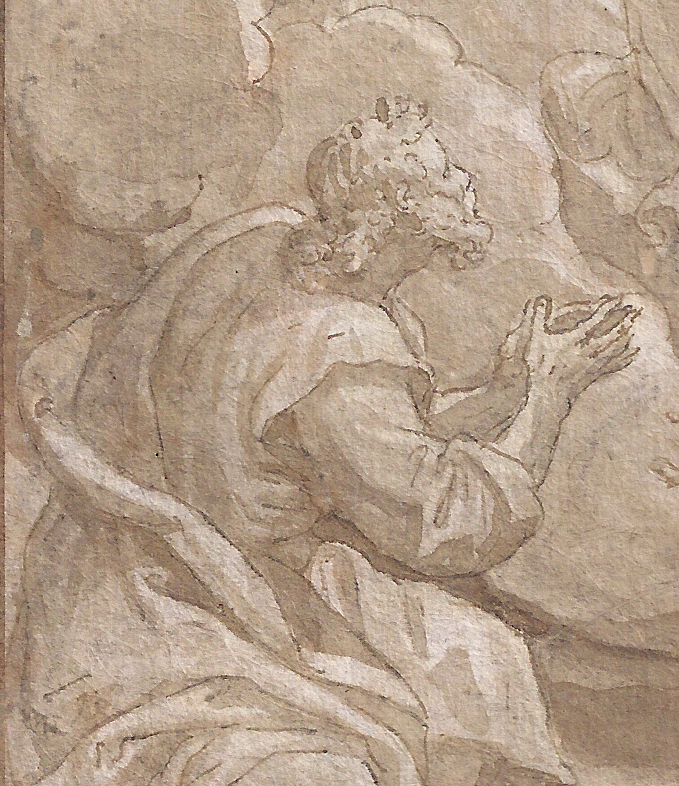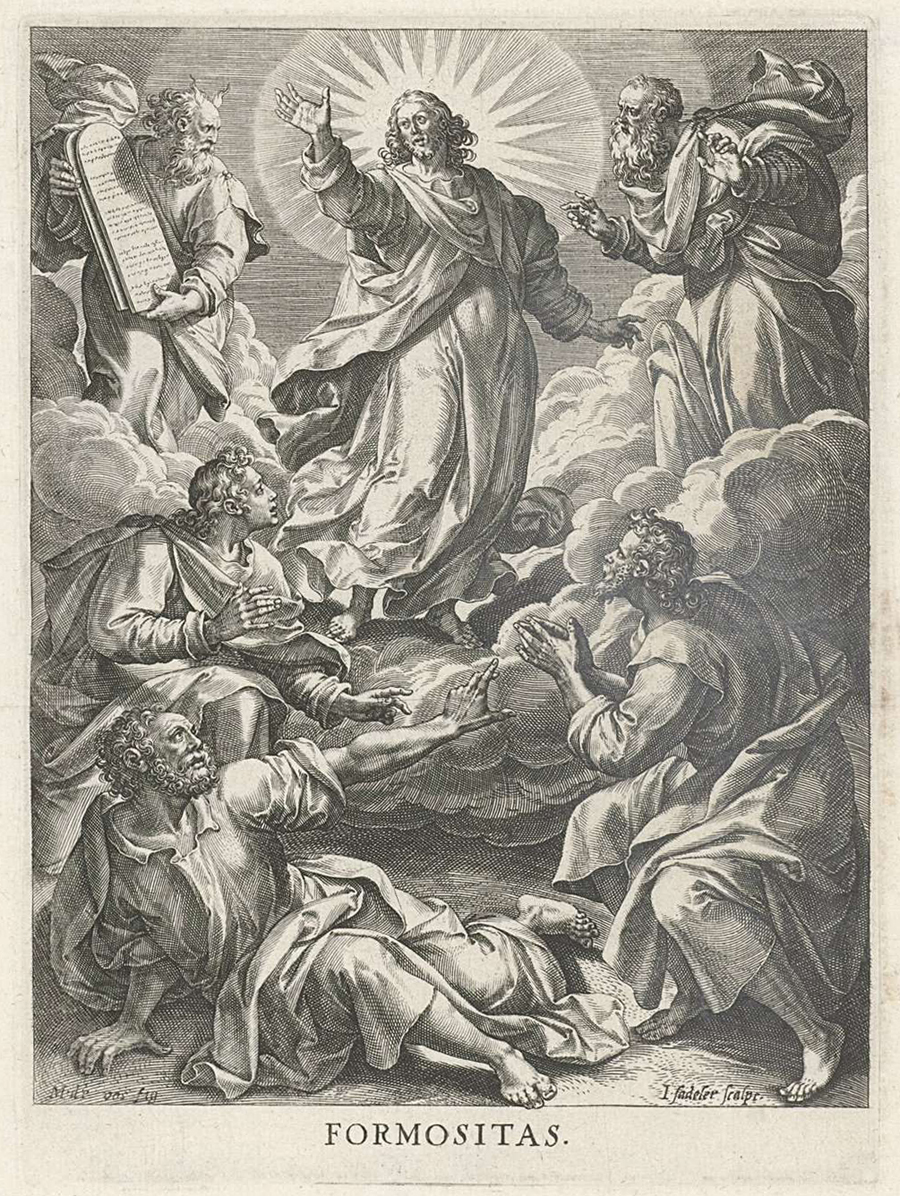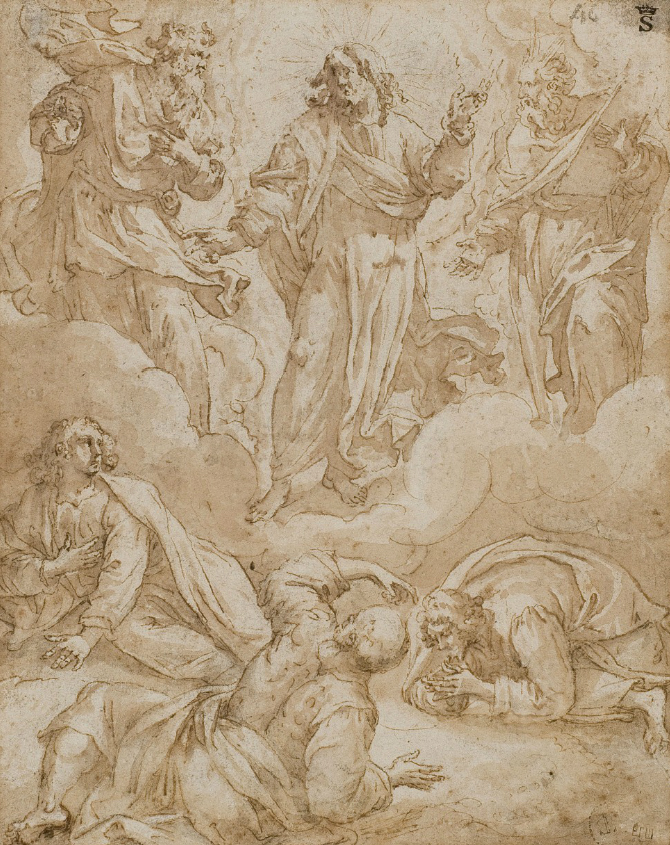MAERTEN DE VOS (Antwerp 1532 – 1603 Antwerp)
Maerten de Vos (Antwerp 1532 – 1603 Antwerp)
The Transfiguration
Pen and brown ink, brown-grey wash, heightened with white, over traces of black chalk, on light brown paper, brown ink framing lines, 165 x 128 mm (6.5 x 5 inch)
Executed c. 1585–1588
Inscribed ‘CB’ (brown ink, lower left, possibly an early attribution to Crispijn van den Broeck)
Provenance
- Unidentified collector’s mark in the form of a star
- Albert Léon Victor Finot (1853–1914), Troyes, France (Lugt 3627)
- Private collection, Paris
***
Maerten de Vos lived and worked almost all his life in Antwerp.1 He trained there, became a master in St Luke’s Guild in 1558 and was appointed Deacon in 1572. In his youth he travelled to Italy to see the work of his Italian contemporaries and the great Renaissance masters. In Venice he was particularly impressed by Tintoretto, for whose paintings he even painted backgrounds, according to Carel van Mander. On his return to Antwerp he set up his own studio, which gradually acquired prominence in the city. Notably after the Iconoclasm of 1566 he received many church commissions to paint new altarpieces.
After the death of Frans Floris in 1570, De Vos became the leading painter in Antwerp. His influence on the pre-Rubens generation was significant. Ironically enough, De Vos had Protestant sympathies, but owed his reputation to his work for the Roman Catholic church.
De Vos’s output of drawings was profilic. Some 500 extant drawings are attributed to him, but in view of the large number of engravings made after his drawings, there must have been many more. By far the majority of his drawings were intended to be engraved, only a small amount of the rest serving as designs for paintings or as picture drawings in their own right.2
The present drawing is one such design for a print: it was engraved by Johannes I Sadeler (1550–1600), as part of a series of the Virtues of Christ, with eight scenes from His Life and Passion, and a frontispiece, dated 1585–88 (see fig.).3 One other preparatory drawing for the series is known, for the Healing of the Paralytic (Hollstein 1156), dated 1586, which is preserved in the Institute of Arts, Detroit.4
The engraving after our drawing is entitled FORMOSITAS, Latin for beauty, referring to the state which Christ achieved after being transfigured, or metamorphosed, and became radiant upon a mountain. The episode is described in Matthew 9:1-8, Mark 2:1-12 and Luke 5:17-26. Christ and three of his Apostles are depicted on the Mount of Transfiguration, where He begins to shine with bright rays of light. De Vos has chosen the moment where the prophets Moses and Elijah appear beside Him. Thomas Aquinas considered the Transfiguration ‘the greatest miracle’, in that it complemented Baptism and showed the perfection of life in Heaven. Maerten de Vos depicted the subject again in drawings with related compositions, one now preserved in the Albertina, Vienna (see last fig.);5 while another was sold at Christie’s in Paris in 2011.6
SOLD
1. For the artist, see Victor A. Dirksen, Die Gemälde des Martin de Vos, Berlin 1914 and A. Zweite, Marten de Vos als Maler: ein Beitrag zur Geschichte der Antwerpener Malerei in der zweiten Hälfte des 16.Jahrhunderts, Berlin 1980.
2. See A. Reinsch, Die Zeichnungen des Marten de Vos: stilistische und ikonographische Untersuchingen, diss. Tübingen 1967.
3. Hollstein (De Vos) 1152–1160; the engraving after our drawing H. 1157; illustrated here is the impression in the Rijksmuseum, Amsterdam, inv. no. RP-P-1966-80. Hollstein mentions a preparatory drawing for this print in the Steinmetz collection, Brussels, but although this also depicts the Transfiguration, in fact it is a different composition and of horizontal orientation, see R.-A. d’Hulst, ‘Over enkele tekeningen van Maarten de Vos’, Miscellanea Joseph Duverger. Bijdragen tot de kunstgeschiedenis der Nederlanden, II, Ghent 1968, p. 514, pl. 6.
4. Pen and brown ink and brown wash, heightened with white, 189 x 148 mm; inv. no. 1909.1S-DR.321; see Anne-Marie S. Logan, Dutch and Flemish drawings and watercolors, Detroit 1988, no. 58, pl. XVI.
5. Pen and brown ink, brown wash, 287 x 230 mm; signed and dated 1589; Graphische Sammlung Albertina, Vienna, inv. no. 7929. O. Benesch, Die Zeichnungen der Niederländischen Schulen des XV. und XVI. Jahrhunderts, Vienna 1928, no. 188, repr.
6. Pen and brown ink, brown wash, heightened with white, 168 x 134 mm; Christie’s, Paris, 1 April 2011, lot 52, sold € 10,625.
